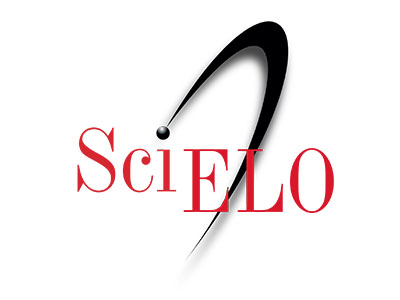Audit of the future, prospective and artificial intelligence to anticipate risks in organizations
DOI:
https://doi.org/10.37135/ns.01.11.07Keywords:
Future auditing, artificial intelligence, organizations, prospective thinking, risksAbstract
Digital innovation is a strategic tool in organizations. Technology is revolutionizing all areas of business, so foresight and artificial intelligence can be presented as key tools in auditing processes. This article, through a literature review, interviews, and analysis, seeks to determine conceptual aspects related to the audit of the future and how this topic has been addressed in educational institutions and companies in Ecuador. Among the results, it is highlighted that foresight and artificial intelligence applied in auditing have become tools to achieve higher levels of quality, improve processes, reduce time and money, and provide reliable data for decision making and risk identification. The results also determined that some of the risk rating companies in Ecuador are not satisfied with technological advances and have a low level of use of technological tools and artificial intelligence. Similarly, accounting and auditing careers in higher education institutions do not have advances in innovation, nor do they consider the teaching of foresight or artificial intelligence tools in their curricula.
Downloads
References
Advisory, K. (2021). KPMG Advisory. Obtenido de https://advisory.kpmg.us/services/data-analytics/artificialintelligence.html
Aparicio, I, (2021). Global suite Solutions. Obtenido de https://www.globalsuitesolutions.com/es/author/irene-aparicio/
Berger, G. (1957). Sciences humaines et previsión. Revue des Deux Mondes, (3). http://www.revuedesdeuxmondes.fr/archive/article. php?code=14758
Berger, G. (1967). Etapes de la prospective, París, PUF
Calapiña, E., Chuquilla, J., Toapanta, J. (2019). La planificación estratégica y la prospectiva, semejanzas y diferencias: una revisión de literatura de los últimos 20 años. Tambara, 9(54), 742-759. Obtenido de https://tambara.org/wp-content/uploads/2019/09/6.LA-PLANIFICACI%C3%93N-ESTRAT%C3%89GICA-Y-LA-PROSPECTIVA_toapanta_FINAL-FINAL.pdf
Davenport, T. H. (2016). Deloitte. Obtenido de Deloitte: https://www2.deloitte.com/conte nt/dam/Deloitte/us/Documents/d eloitte-analytics/us-daadvanced-audit-analytics.pdf
Deloitte. (2016). Deloitte Forms Alliance with Kira Systems to Drive the Adoption of Artificial Intelligence in the Workplace. Obtenido de https://www.prnewswire.com/news-releases/deloitte-forms-alliance-with-kira-systems-to-drive-the-adoption-of-artificial-intelligence-in-the-workplace-300232454.html
Domínguez, J. (2019). Cómo implementar la inteligencia artificial en la auditoría interna. Revista Contaduría Pública. Obtenido de https://contaduriapublica.org.mx/2019/08/01/inteligencia-artificial/
EY. (2019). EY. Obtenido de https://www.ey.com/en_gl/news/2019/04/multimillion-dollarinvestment-in-ey-blockchainanalyzer-delivers-new-upgradesfor-blockchain-andcryptocurrency-audit-and-taxservices
Faggella, D. (2020). The Al Research and Advisory Company. Obtenido de https://emerj.com/aisector-overviews/ai-in-theaccounting-big-four-comparingdeloitte-pwc-kpmg-and-ey/
Fonseca, O. (2011). Sistemas de Control Interno Para Organizaciones.
Lima, Perú: Instituto de Pesquisa em Responsabilidad e Controle IICO. Obtenido de
https://books.google.com.ec/books?id=plsiU8xoQ9EC&dq=falta+de+control+interno&source=gbs_navlinks_s
Federación Internacional de Contadores-IFAC. (2016). Evaluar y mejorar el control interno en las organizaciones. Obtenido de https://www.ifac.org/system/files/publications/files/Evaluar-y-mejorar-el-control-interno-en-las-organizaciones.pdf
Godet, M. (2007). Prospectiva Estratégica: problemas y métodos. Cuadernos de LIPSOR, 104, 20. Obtenido de https://archivo.cepal.org/pdfs/GuiaProspectiva/Godet2007.pdf
Hernández, F., & Fernández, C., y Baptista. (2010). Metodología de la investigación. México: Editorial Mexicana. Obtenido de https://www.uca.ac.cr/wp-content/uploads/2017/10/Investigacion.pdf
Hernández, L., Jiménez, A., Lemun, J., & Gutiérrez, F. (2022). La Prospectiva de los mecanismos en la detección de fraudes financieros. Revista Decisión Gerencial, 1(1), 31-41. Obtenido de https://decisiongerencial.ucacue.edu.ec/index.php/decisiongerencial/article/view/6
Manrique, E. (2016). Las Clasificadoras de Riesgo. In Iure, 1. Obtenido de https://revistaelectronica.unlar.edu.ar/index.php/iniure/article/view/112/108
Mantilla, S. (2013). Auditoría del Control Interno (Tercera ed.). Bogotá, Colombia: ecoeediciones. Obtenido de https://books.google.com.ec/books?id=rMS4DQAAQBAJ&dq=falta+de+con+trol+interno&source=gbs_navlinks_s
Mendívil, V. (2016). Elementos de Auditoría. México, D.F.: Cengage Learning Editores, S.A. Obtenido de Recuperado de https://issuu.com/cengagelatam/docs/elementos_de_auditor__a_mend__vil_i
Miles, I. (2021). Impacto y análisis de la implementación de la inteligencia artificial en la auditoría de empresas de servicios de información del Ecuador (calificadoras de riesgo) en un futuro próximo. Universidad Politécnica Salesiana (Tesis Pregrado). Obtenido de https://dspace.ups.edu.ec/handle/123456789/19916
Molina, F., & Fernández, L. E. (2018). La inteligencia artificial en el ámbito contable. Contribuciones a la Economía, (julio). Obtenido de https://www.eumed.net/rev/ce/2018/3/inteligencia-artificial-contable.html
Montoya, A., & Valencia, F. (2020). Inteligencia artificial al servicio de la auditoría: una revisión sistemática de literatura. Revista Ibérica de Sistemas e Tecnologias de Informação, (E27), 213-226. Obtenido de https://www.proquest.com/openview/8a2868ccf43245be9a642a31d5454ca4/1?pq-origsite=gscholar&cbl=1006393
Morán, M. (2020). El enfoque de la auditoría en el entorno de la era digital y la inteligencia artificial. Revista la Junta, 3(2), 15-41. Obtenido de https://doi.org/10.53641/junta.v3i2.54
Pereira, C. (2019). Control interno en las empresas: Su aplicación y efectividad. México:
Instituto Mexicano de Contadores Públicos IMCP, (Vol 1). Obtenido de
https://books.google.com.ec/books?id=xM_DDwAAQBAJ&dq=falta+de+control+interno&source=gbs_navlinks_s
PricewaterhouseCoopers. (2014). PwC. La auditoría del futuro y el futuro de la auditoría. Obtenido de https://www.pwc.es/es/publicaciones/auditoria/assets/informe-temas-candentes-auditoria.pdf
PricewaterhouseCoopers. (2021). PwC. Obtenido de https://www.pwc.com/gx/en/abo ut/stories-from-across-theworld/harnessing-the-power-ofai-to-transform-the-detection-offraud-and-error.html
Rodríguez, J, (s.f) La prospectiva y la política de innovación. Obtenido de https://www.eenbasque.net/guia_transferencia_resultados/files/Jesus_Rodriguez_Cortezo-La_Prospectiva_y_la_Politica_de_Innovacion.pdf
Rodríguez, M., Piñeiro, C., & De Llano, P. (2014). Determinación del riesgo de fracaso financiero mediante la utilización de modelos paramétricos, de inteligencia artificial, y de información de auditoría. Estudios de economía, 41(2), 187-217. http://dx.doi.org/10.4067/S0718-52862014000200002
Sandoval, H. (2012). Introducción a la auditoría (ed.). Tlalnepantla, México: RED TERCER MILENIO.
Zemankova, A. (2019). Artificial Intelligence in Audit and Accounting: Development, Current Trends, Opportunities and Threats Literature Review. In 2019 International Conference on Control, Artificial Intelligence, Robotics & Optimization (ICCAIRO) 150). https://doi.org/10.1109/ICCAIRO47923.2019.00031







